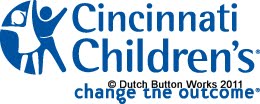Anti-epileptica: Low adherence
Therapietrouw bij epilepsie
Nearly 60 Percent of Children with Epilepsy Do Not Take Their Antiepileptic Medications As Prescribed, Says JAMA Study .
Nearly three of every five children with newly diagnosed epilepsy are do not take their antiepileptic medications as prescribed over the first six months of therapy, according to a new study published in the April 27 issue of JAMA, the Journal of the American Medical Association.
This high rate of non-adherence was surprising and concerning, says Avani C. Modi, PhD, co-director of the New Onset Seizure Program at Cincinnati Children’s Hospital Medical Center and lead author of the study.
 |
Insulten
“Non-adherence in children with epilepsy can interfere with reaching treatment goals and eliminating seizures,” says Dr. Modi. “This study suggests the need to work with families of children with epilepsy to identify and remove barriers to taking medications early in the course of therapy.”
The researchers studied 124 children and their caregivers seen at the New Onset Seizure Clinic at Cincinnati Children’s. These children were newly diagnosed with epilepsy and just starting medication. Caregivers were given a cap and bottle that electronically monitored adherence to the prescribed drug. Families were asked to remove the medication from the bottle only at the time of dosing. The data collected from the caps was not shared with families or healthcare providers during the course of the study.
During each child’s clinic visits, researchers examined a variety of factors that could affect adherence, including each child’s family characteristics, seizure frequency, and medication side effects. Medications were changed by the child’s healthcare provider if seizure control was inadequate.
The researchers identified different adherence patterns. Thirteen percent exhibited severe early non-adherence, seven percent severe delayed non-adherence, 13 percent moderate non-adherence and 26 percent mild non-adherence. Only 42 percent demonstrated near-perfect adherence. Most patients established their pattern of adherence in the first month of drug therapy. The Cincinnati Children’s researchers found that the lower the socioeconomic status of the family, the more likely children and their families are to miss doses of their medication.
USA: 325000 kinderen
Epilepsy affects 325,000 children in the United States under 15. Among adults with epilepsy, non-adherence to drug treatment regimens has been associated with continued seizures, higher mortality and higher healthcare costs. It is unclear, says Dr. Modi, whether the consequences of non-adherence in children are similar to those in adults.
Bron: cincinattichildrens.org, Tuesday, April 26, 2011
